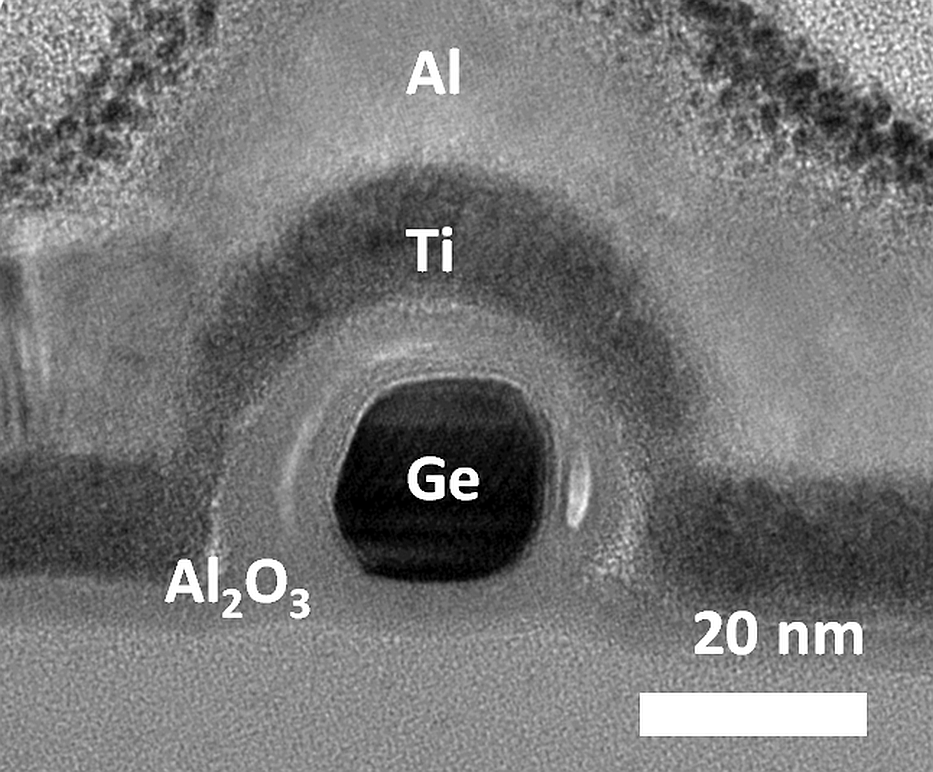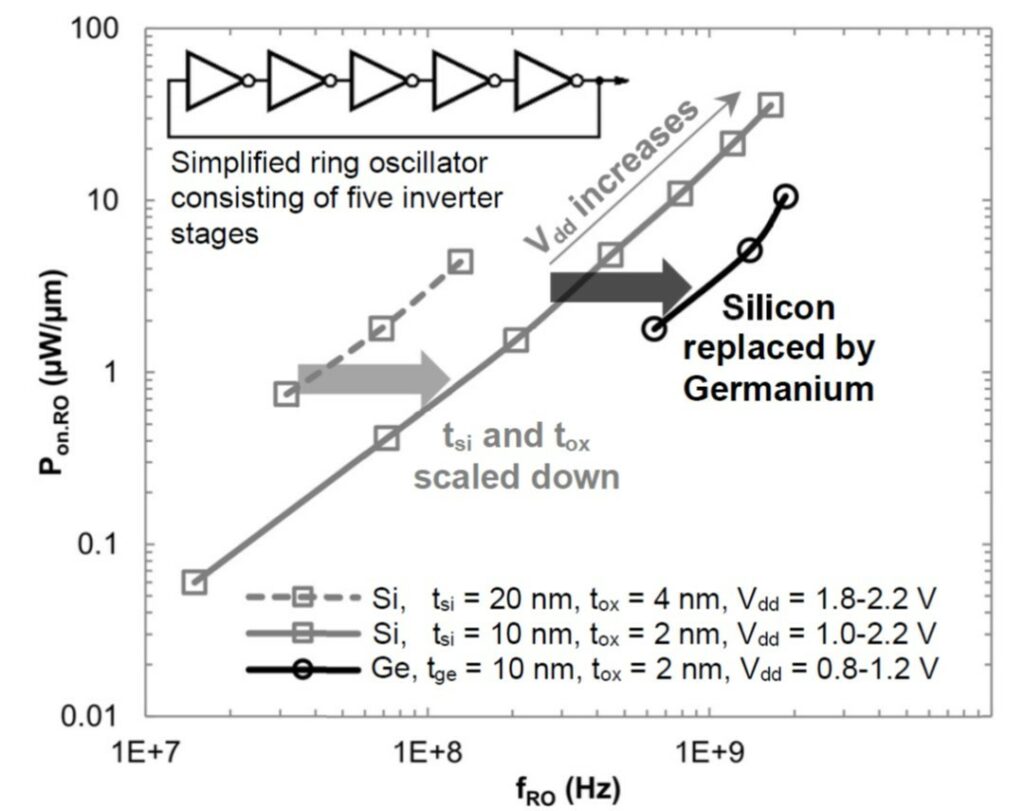We have experimentally demonstrated the world-wide first transistor based on germanium that can be programmed between electron- (n) and hole- (p) conduction, Fig. 1. The reconfiguration is realized by changing the voltage applied to one of the gate electrodes. This option enables to realize circuits with lower transistor count compared to state-of-the-art CMOS technologies. Additionally, Transistors based on germanium can be operated at low supply voltages and reduced power consumption, due to the low band gap as compared to silicon.

The approach taken solves one of the limitations in using low-bandgap channel materials such as germanium and indium-arsenide. In conventional MOSFETs made from those materials the off state is strongly degraded by a high static current and associated power loss, also originating from their small band gaps. The off-currents can be drastically reduced by the blocking potential induced by the program gate.
We have verified by measurements and simulations, that supply voltage can be reduced by a factor of 2 and dynamic power consumption can be about 4 times lower compared to silicon based RFETs. In addition, on currents can be boosted by up to a factor of 10 without degradation of capacitances, see Fig. 2. This translates into a switching delay reduction of up to a factor of 10. For different device geometries performance and power consumption metrics were extracted and benchmarked with modern conventional devices, see Fig. 3. Scaled Ge RFETs are competitive compared to other modern low standby and operating power technologies. The performance boosting at the device level combined with the circuit capabilities of RFETs hold the promise of enabling new ground breaking circuit applications.
Within the reporting period, NaMLab and its partners evaluated optimal designs, layouts, and sizes for Ge based RFET using TCAD simulations. Results indicate a largely improved performance in conjunction with negligible increase in dynamic power consumption. Currently, SPICE-compatible Table models for circuit development with highly scaled Ge nanowire RFETs are under development. Target applications are hardware security, asynchrony computing and self-learning neuronal networks.


Cooperation:
cfaed – Center of Advancing Electronics Dresden (Germany)

